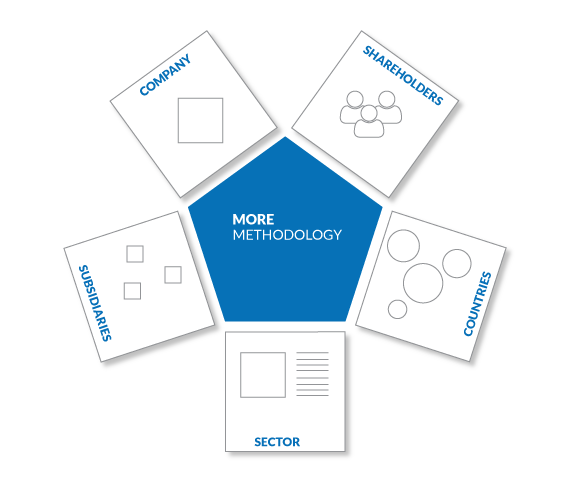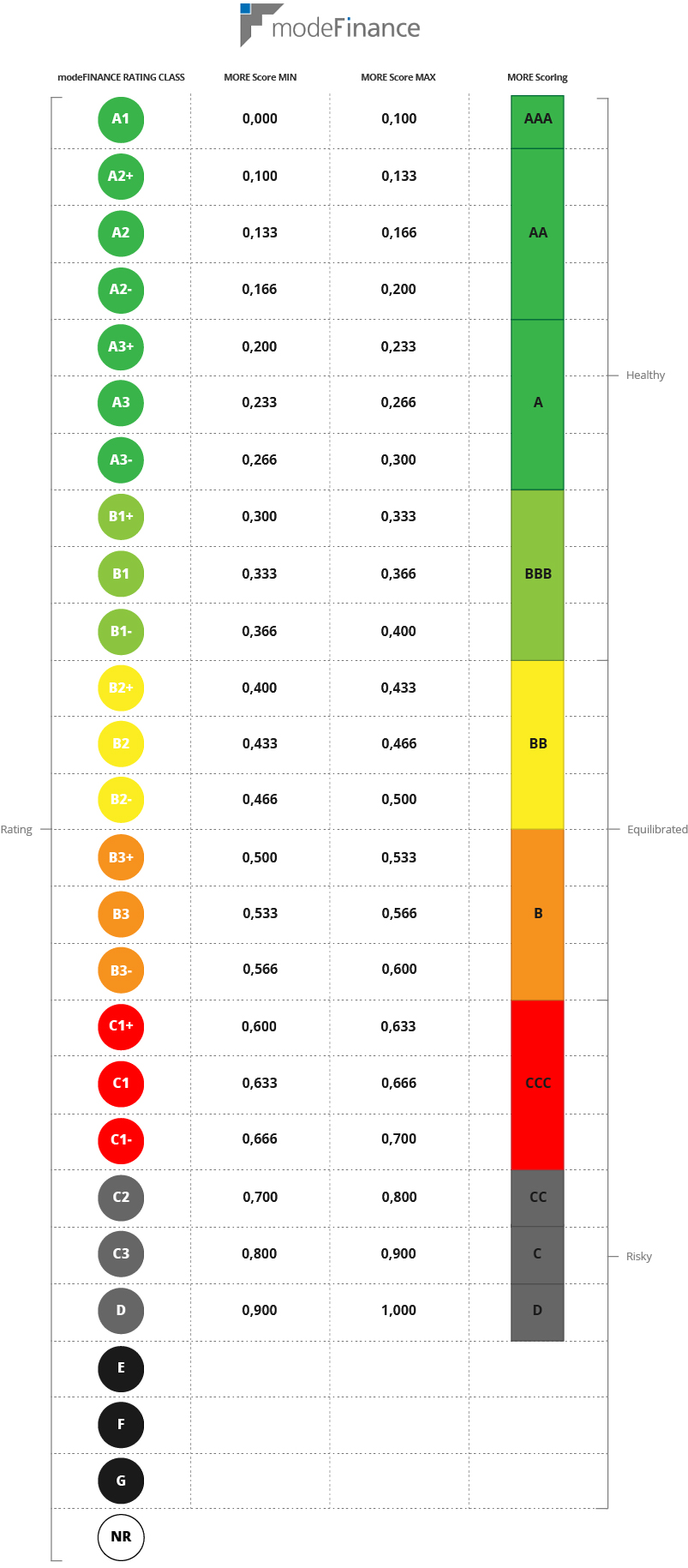modefinance Rating Methodology
The modefinance Methodology for CRA Credit Rating of non-financial companies
modefinance Rating Methodology represents the basis for the credit assessment analysis carried out by modefinance rating analysts.
The analysis are grouped in the following substeps:
- Company and the group: considers entity's size, longevity, legal status, governance and group analysis. The main inputs of this phase are the official and public information by the textual texts of the annual accounts (explanatory notes). In those textual parts the analyst must focus the attention on potential source of risk (or risk attenuation) that are not evident merely from a numerical analysis i.e. guaranties, business management reports, audit reports, etc. The assessment includes the analysis of the mutual dependence inside the company’s group (if it is applicable).
- Industry and country: covers the aspects of industry's creditworthiness and relevant news, influence of macroeconomic conditions, political risk and country-specific relevant news. Concerning country risk, the following aspects are considerate: Scale of the Economy, GDP Growth and Volatility, National Income, Inflation Level and Volatility, General government gross debt, Current account balance and Political risk.
- Final adjustment: represents the effect of a final overall assessment of the entity performed by analysts. In this section the analyst is required to perform a fine tuning of the final assessment taking into account all the information regarding the corporate.
Rating Methodology includes a checklist (“RATING Relevant Information”) which is used by modefinance rating analysts (along with MORE Confidence Level) in order to evaluate the quality and availability of data on the entity to be rated.
link to the extended PDF document of Rating Methodology Version 1.0

modefinance MORE Score Methodology for non-financial companies
The Credit Score MORE by modefinance
According to modefinance credit rating issuance process, one of the first steps is obtaining the credit scores applying the MORE Methodology on publicly available information gathered for the rated entity.
The Multi Objective Rating Evaluation (MORE) model has been developed by modefinance in order to assess the level of distress of industrial companies by using data included in financial statements. It provides mainly a creditworthiness opinion (Assessment) by means of a risk class (MORE class) according to a predefined scale.
The basic idea of the model is to analyze a set of financial and economic ratios in a predictive corporate bankruptcy model with the purpose of creating a fundamental credit scoring model for each industrial sector.
Results of the model are obtained by applying newly developed numerical methodologies, drawing together financial theory, data mining and engineering design methodologies. The heart of MORE is a multi dimensional and multi objective algorithm that produces a classification of each company, by taking into account any attributes (such as sector and country) characterizing a firm.
The model gives the opportunity to assign a risk class to a company even without considering a complete data analysis and allows to process quality information. It induces a better understanding of a company’s strength and weakness thanks to sophisticated data mining tools and taking into account the analysts’ knowledge.
The model includes a tool such as the MORE Confidence Level, which is used by modefinance analysts (along with RATING Relevant Information checklist) in order to evaluate the quality and availability of data on the entity to be rated.
link to the extended PDF document of MORE Methodology (Version 2.0)
Link to the extended PDF document of MORE Validation (2020)


